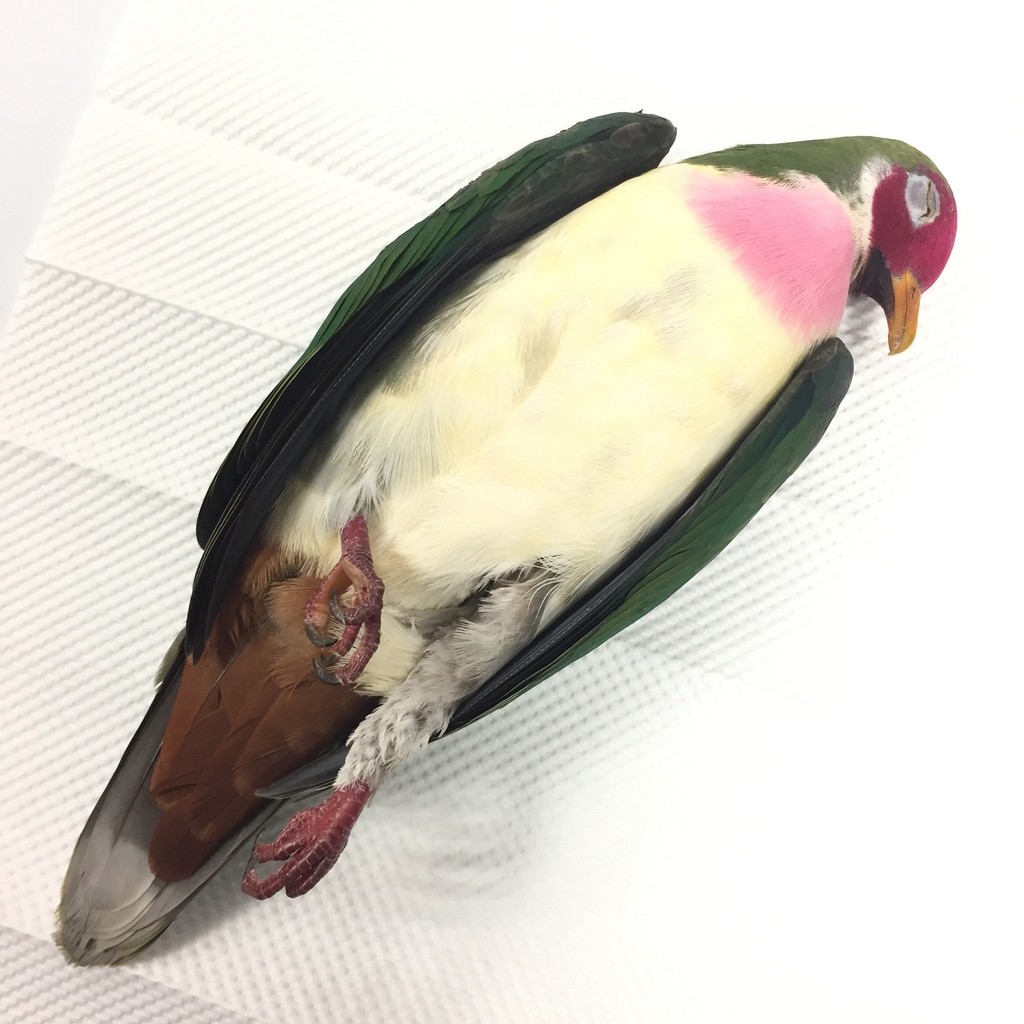Jambu Fruit Dove
A species of Fruit-doves Scientific name : Ptilinopus jambu Genus : Fruit-doves
Jambu Fruit Dove, A species of Fruit-doves
Botanical name: Ptilinopus jambu
Genus: Fruit-doves
Content
Description General Info
 Photo By g33k5p34k , used under CC-BY-NC-4.0 /Cropped and compressed from original
Photo By g33k5p34k , used under CC-BY-NC-4.0 /Cropped and compressed from original Description
The jambu fruit dove (Ptilinopus jambu) is a smallish colourful fruit dove. It is a resident breeding species in southern Thailand, Malaysia, Brunei and the Indonesian islands of Kalimantan, Sumatra and Java. The jambu fruit dove inhabits mangrove swamps and lowland rain forests up to 1,500 m (4,900 ft) and is also found in second growth woodland. The male holds a breeding territory, advertised by raising its wings, bobbing its body and cooing. It will defend its territory with a quick peck if the territorial display fails. The female builds a flimsy nest of twigs, roots and grasses, which are collected by her mate, in a tree and lays one or sometimes two white eggs which are incubated for about 20 days to hatching, with a further 12 or more days to fledging. The jambu fruit dove is 23–27 cm (9.1–10.6 in) long and weighs about 42 g (1.5 oz). It is a plump small-headed bird with soft feathers and very distinctive colouring including a white eye ring, orange bill and red legs. The call is a soft, low coo. The adult male has a crimson face with a black chin, unmarked green upperparts and white underparts, with a pink patch on the breast and a chocolate brown undertail. The female differs from the male by having a dull purple face with a dark chin. The underparts are green with a white belly and cinnamon undertail. The immature jambu fruit dove resembles the female but has a green face. The young male acquires its full adult plumage in about 39 weeks from fledging. Immature males are similar in appearance to females. The jambu fruit dove is a shy and inconspicuous bird, camouflaged against the forest canopy by its green plumage. It is usually seen alone or in pairs, but a sizable flock may gather when feeding at a fruit tree. It eats fruit directly from the tree, or from the ground if items have been dropped by hornbills or monkeys. Like other doves, but unlike most birds, it can drink by sucking. Extensive deforestation in Indonesia and Malaysia means that this dove is now threatened, although its ability to live in second growth and at higher elevation means that its situation is not as critical as that of some forest bird species. The jambu fruit dove is evaluated as Near Threatened on the IUCN Red List of Threatened Species. 
Size
28 cm
Nest Placement
Tree
Feeding Habits
Jambu Fruit Dove primarily consume fruits and berries, often foraging in the branches. They also feed on fallen fruits, likely dislodged by other animals such as monkeys and hornbills.
Habitat
The jambu Fruit Dove predominantly inhabits forested regions, particularly favoring wooded areas such as mangroves. This species exhibits a preference for smaller islands, often traversing between them. Generally, it is recognized as a lowland dweller, residing primarily in dense tropical lowland rainforests across broader Southeast Asia.
Dite type
Frugivorous
General Info
Feeding Habits
Bird food type

Fruit
Scientific Classification
Phylum
Chordates Class
Birds Order
Pigeons and doves Family
Dove Genus
Fruit-doves Species
Jambu Fruit Dove